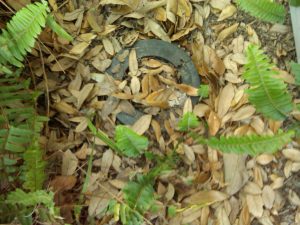Are you contemplating the installation of a termite bait system for your home? If so that’s great & I truly hope it works out for you. There are many great aspects to this type of approach and it’s pretty easy to find all those on line or I’m sure your local termite inspector who sells a certain system will be happy to fill you in.
This article is not about its virtues nor is it a comparison of termite bait verses termite liquid. I merely want to point out a huge downfall of ANY system and its one that the manufacturer has little or no control over. This one flaw has been addressed and new technology does make it harder to fudge but where there is a ‘lack’ of will-there is a way.
They Do Work As Advertised
The way termite bait systems work is to use the termites own habits and biology against it. Putting irresistible food stations out in the path of blind foraging termites is great way to get a strike and the process of elimination begins. Termite technicians know the best spots to install these freebies around a home and even though the termite is blind, forages at least partially at random and cannot sense the stations in any traditional way an insect finds food- you can bet you bottom dollar that if subterranean termites are in the vicinity, the probability is very high they will find the placement. So what’s not to like?
The Problem
Have you ever seen a highway crew at the beginning of a road project? They tear the road up at record pace and miles of earth are pushed to and fro. One day the lane shifts left to avoid the dirt and the next day it’s asphalt and you now have to veer right. Ever see that crew towards the end of the job? Trucks are idle all over the place as the workers huddle around leaning on shovels and bored flagmen stand with radios in hand and simply watch the 25 mph traffic go by all day.
While I’m sure my analogy has some holes in it the basic principle when it comes to termite baiting is still something I see a lot. When the job is first sold the technician puts in what looks like a beautiful barrier- The stations are new and look quite impressive as they encircle your home ready to stand guard against the subterranean threat. Perhaps the first scheduled check goes alright and maybe even the first year which ranges from 3 to 5 visits depending on which system you’ve chosen. But somewhere along the line just like our road crew things slow down. Stations aren’t scrutinized so much anymore and less care is taken to keep the stations up to snuff. This leads to an ineffective system and gives the homeowner the false impression that his termite bait program is still on the job.
Ok One Comparison
The knock on liquids is that from day one they begin to break down and over time you have nothing left. Touché. But in that same sense so do termite bait systems. Usually no bait is put in the station until there’s a hit or strike. That wood, also degrades from day one and I’ve seen this ‘lure’ go completely bad with rot and moisture damage in as little as two months. Once it’s too far gone it is no longer an attractive food source for termites but it’s great for ants and all sorts of arthropods. What termite bait systems depend on is the technician to ‘freshen’ up the station with each visit. This normally means placing new wood inside the station if it’s bad but could also include moving a station that’s constantly plagued with excess water or maybe it’s in the way of weed whackers and the like.
Once this critical part of the system begins to break down-you no longer have an effective means of control:
There are a few reasons I’ve seen as to why this happens and I doubt you’ve found many listed as you’ve done your homework in consideration of having a system installed at your home;
Grass grows over and in lid making it hard to open and close
Ants colonize the station and rather than treat the ants the station is skipped
To many stations at one site so a strategy of skipping every other one saves time
Ground debris like leaves cover the locations making them hard to find without flags or markers so some are skipped
Dirt builds up in barrel of station making it difficult to replace wood
Station is constantly filled with water so it needs to be moved (we’ll get it next time)
Stations are installed in thick shrubbery and are hard to find and hard to fight the bushes to get to them
Most stations are made of cheap plastic and prone to break-it takes time to replace (we’ll get it next time)
Zealous company owners under estimated the labor involved and do not allow enough time for this now low paying task
Once the original infestation seems to have been stopped, a sense of false security can lead to a laxed approach (no termites here-we’ll get it next time)
I hope this writing doesn’t unjustly dissuade you of termite baiting altogether because that is not its purpose. I merely wanted to point out a view point I see in the field and one I don’t see mentioned in all the great how to and termite information sites on the web. Baiting for termites is and will continue to be something I use in my business and will offer to those clients who wish to have it. If you have the unfortunate need or want to be proactive for termite control you have many options and this is definitely one of them. Just make sure somewhere down the line you consider- The Forgotten Termite Bait Station.




